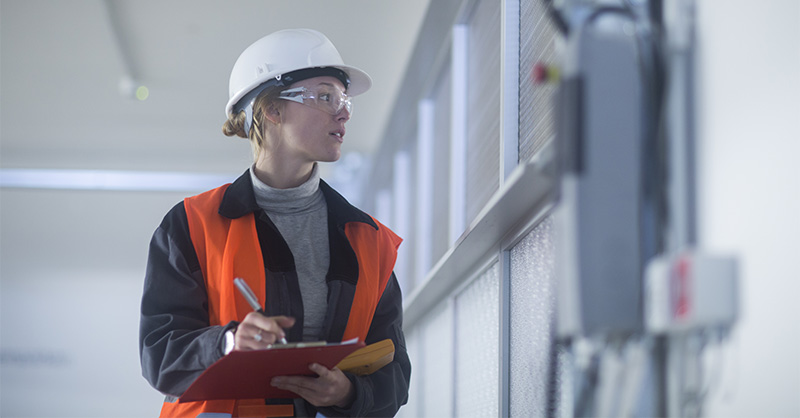Supervising Workplace Accident Investigations

The below chart provides a guide to the proper identification of accident causes and suggested corrective action to eliminate or control them.
When an accident occurs in your department, it is an indication that something has gone wrong. Accidents don’t just happen, they are caused.
When an accident does occur, it is important that you, the Line Supervisor, investigate the accident to determine the cause and to initiate corrective action to ensure that similar accidents will not occur from the same causes again.
The basic cause(s) of virtually any accident are “unsafe acts” and/or “unsafe conditions.” Most accidents involve a combination of causes, involving both environmental and behavioristic factors. The below chart provides a guide to the proper identification of accident causes and suggested corrective action to eliminate or control them.
When you investigate an accident, you should consider the following:
- Every accident is caused. Carelessness is not a cause, but the result of some deficiency. Telling employees to be more careful will not eliminate the real accident causes.
- An accident investigation is not a trial to find fault or to place blame. Its purpose is to find accident causes so that corrective measures may be taken to prevent future accidents.
- Most accidents result from a combination of human error and a physical hazard. Do not overlook the possibility of multiple errors and hazards. Find and remove all contributing causes.
- Do not stop at the obvious answer. For example, a missing machine guard does not cause an accident; its function is to help prevent injury if an accident happens. If the accident happened because the operator entered the point of operation when the machine guard was removed, find out why the operator did this and why the guard was off. Only by correcting both problems can you be confident that the next accident will be prevented.
- The accident investigation should be conducted as soon after the accident as possible. Facts should be gathered while the accident is fresh in the minds of those involved. If possible, question every employee who was involved in or witnessed the incident.
Once you have determined what causes contributed to the accident, make suitable recommendations for corrective action to prevent recurrences.
| Environmental Conditions | Definition of Condition | Suggested Corrective Action |
|---|---|---|
| Unsafe Procedure | Hazardous process: Management failed to make adequate plans for safety. |
|
| Defective Through Use | Buildings, machines or equipment that have become rough, slippery, sharp-edged, worn, cracked, broken or otherwise defective. |
|
| Improperly Guarded | Work areas, machines or equipment that are unguarded or inadequately guarded. |
|
| Defective Through Design | Failure to provide for safety in the design, construction, and installation of buildings, machinery and equipment. Determine if it is too large, too small or not strong enough. |
|
| Unsafe Dress or Apparel | Management’s failure to provide or specify the use of goggles, respirators, safety shoes, hard hats and other articles of safe dress or apparel. |
|
| Unsafe Housekeeping Facilities | Unsuitable layout or lack of equipment necessary for good housekeeping– shelves, boxes, bins, aisle markers, etc. |
|
| Improper Ventilation | Poorly ventilated or not ventilated at all. |
|
| Improper Illumination | Poorly illuminated or not illuminated at all. |
|









